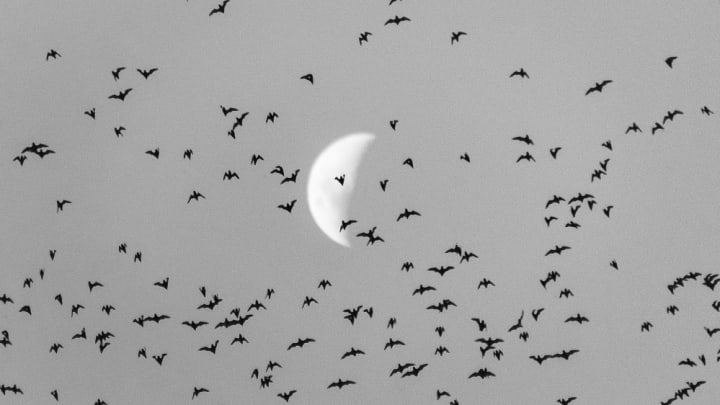Watch Millions of Bats Go Night Hunting
Mulu National Park is not a good place to be a mosquito.
By Anna Green

Every evening, the caves in Malaysian Borneo’s Mulu National Park begin to squeak and rustle as close to 3 million bats prepare for their nightly hunt. The enormous colony, home to at least 12 species of bats, emerges in what looks like dark ribbons rippling through the sky; they travel in groups to protect themselves from predators like bat hawks that lurk nearby.
This nightly bat exodus, which occurs most early evenings between 5:30 p.m. and 6:30 p.m., is one of the most popular attractions in the park, which is located in Sarawak, Malaysian Borneo. In the below video by Urzala Productions, the bat colony rises from its caves in spectacular formations and disappears into the forest to search for food. It’s a spectacular ritual, captured in silhouette against a cloudy evening sky. According to the Mulu National Park website, the bats travel up to about 62 miles each night, before returning home in the early morning.
People who want to see the spectacle in person have to go on a roughly 2.36-mile (3.8 kilometers) trek along a raised walkway. It’s a scenic route; one that wanders through the forest and along rivers. There’s even an observatory people can gather at outside the cave to watch as the millions of bats take to the sky. Just make sure you go when it isn’t raining, as the winged creatures tend to stay within the caves on wet evenings.
According to the park, an individual bat eats anywhere from five to 10 grams’ worth of flying insects. After feasting all night, the millions of bats head back to Deer Cave, where they then deposit a ton of excrement. Those with sensitive noses should probably stick to watching the bats from outside. As writer Anthony Dennis wrote for Stuff in 2017, the cave stinks from “heroic amounts of bat guano.”
A version of this story originally ran in 2016; it has been updated for 2023.